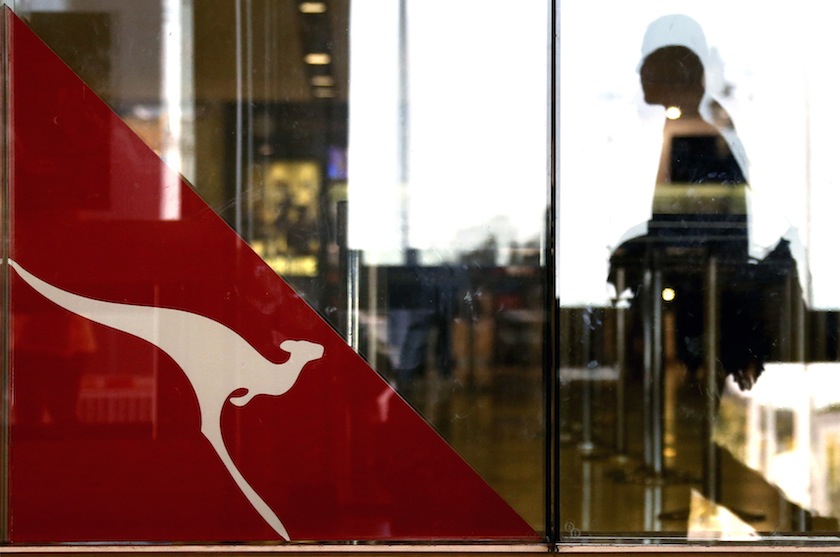SYDNEY, May 12 — A once-unwanted Qantas Airways Ltd division with no planes or passengers is turning into the Australian airline’s biggest money spinner.
Qantas’ frequent-flyer business, earmarked for sale at least twice, has delivered consistent growth since the airline’s historic loss in 2012. Now Chief Executive Officer Alan Joyce is hatching more ambitious plans for his most profitable unit.
Joyce expects the loyalty program’s earnings to almost double by 2022 as a revitalised Qantas sells air miles to a widening pool of companies, from credit-card operators to supermarkets. The business is so central to Qantas that hitting the profit target could underpin a 50 per cent jump in the stock price, First NZ Capital Securities said this week.
“More frequent-flyers means more retailers and other partners are interested, and that just builds upon itself,” said Adam Fleck, the Sydney-based director of research for Morningstar Inc in Australia and a Qantas frequent flyer. “It ends up being a pretty valuable proposition.”
This is how it works: Partners buy Qantas points to reward their own customers for their loyalty. The cost to Qantas of redeeming a point is less than the money it’s sold for, so Qantas makes money on every point. The points are typically redeemed after 24 months, so Qantas generates revenue years in advance.
Qantas shares have jumped 43 per cent this year, valuing the company at A$8.6 billion (RM27.5 billion).
Teeing up points
Almost 12 million members, or every second Australian household, amass points for travel and on purchases of everything from health insurance to wine — even a round of golf. Credit Suisse Group AG estimates that business is worth almost A$4 billion, which is more than the Australian flag-carrier’s international business and double some valuations of the loyalty unit when its sale was contemplated in 2008.
Rather than function solely as a reward for flying on Qantas, the programme is close to being the main draw, said Paul Nelson, founder and managing director of Sydney-based consultancy BrandMatters Pty. The appeal of membership is enough to stop many flyers shopping around for cheaper flights, he said.
Tail wagging
“They’ve taken something that’s seen as being quite secondary and made it almost primary in decision-making terms,” Nelson said by phone. “It’s gone from the dog wagging the tail to the tail wagging the dog.”
To be sure, the 30-year-old frequent-flyer programme is partly hostage to the appeal of Qantas as an airline. The carrier, the world’s third oldest, needs to make available sufficient redemption seats across a range of destinations for customers to see the value in accruing points. While Qantas has bounced back to profit during a three-year turnaround, investors aren’t yet sure how the carrier would handle the next downturn.
At the same time, Qantas has lured millions of frequent flyers in recent years partly because it dominates local rival Virgin Australia Holdings Ltd, controlling about two thirds of the domestic market. Virgin’s own loyalty programme would appeal more if it could grab more of that share, according to Morningstar.
It was a different story a decade ago. Amid rising fuel prices and falling profit, Qantas planned to list the loyalty business. But the global financial crisis got in the way.
Joyce revisited the plan in 2014 as the airline posted a record loss of A$2.84 billion. Just last week, the 50-year-old, Irish-born executive told investors the loyalty business would never be sold.
Other carriers, including Air Canada in 2005 and two Brazil airlines, opted to reap cash by selling stock in loyalty plans. Aimia Inc, which traces its roots to the Air Canada loyalty listing, plunged 63 per cent in Toronto yesterday after Air Canada said it will cut ties with the company in 2020 and launch its own rewards plan. Air Canada stock rose 11 per cent, while Aimia now has a market value of just C$507 million (RM1.6 billion).
As a business, Qantas Loyalty is an air-miles juggernaut that feeds itself. An online store sells everything from suitcases and sunglasses to shavers. Every new member who signs up and hunts for points creates an incentive for retailers to buy miles from Qantas to reward their own customers.
More than a third of credit-card spending in Australia — which totalled A$303 billion in 2016 — is on a Qantas co-branded card, according to the airline, and Qantas plans to grab a bigger share of that market with the release of its own credit card with Citigroup Inc before July.
Frequent flyers earned more than 120 billion points and redeemed 4.9 million flights in 2016. Qantas, known as the Flying Kangaroo, carries around 51 million passengers a year.
Steady income
Divorced from selling tickets and carrying passengers, Qantas’s loyalty business generates steady income that smooths out the cyclical nature of aviation. At Qantas’s investor day last week, loyalty was the only business for which Qantas gave earnings forecasts.
It’s the airline’s only unit to report consecutive earnings growth since 2012. Underlying operating profit at the business is on course to reach as much as A$600 million in 2022, from a record A$346 million in the year ended June 2016, Qantas said last week.
The unit’s most recently disclosed first-half profit margin of 24 per cent makes it more than three times as profitable as the international aviation business and almost twice as lucrative as the domestic division.
By 2020, the loyalty division will be Qantas’s biggest contributor to profit, Bank of America Corp said in a report last month. As an added bonus for Qantas, its loyalty memberships lapse after 18 months of no activity and the miles expire. — Bloomberg






















